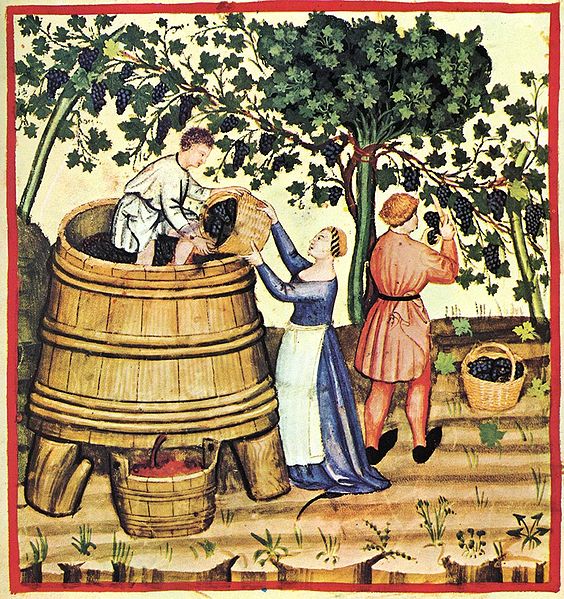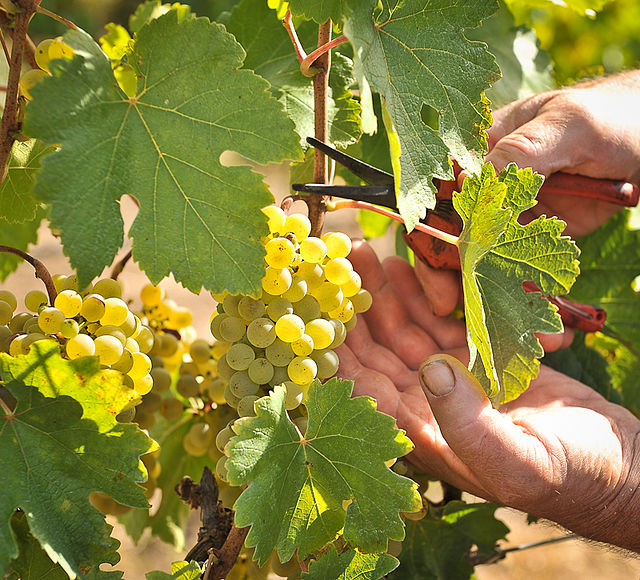Vintage, in winemaking, is the process of picking grapes and creating the finished product—wine. A vintage wine is one made from grapes that were all, or primarily, grown and harvested in a single specified year. In certain wines, it can denote quality, as in Port wine, where Port houses make and declare vintage Port in their best years. From this tradition, a common, though not strictly correct, usage applies the term to any wine that is perceived to be particularly old or of a particularly high quality.
Vintage by Satyrs and Maenads. Ancient Greek Attic black-figure cup, end of 6th century BC. Cabinet des médailles de la Bibliothèque nationale de France, Paris, France
Vintage near Sorrento, Italy, Jacob Philipp Hackert, c. 1784
Vintage champagne
Vintages in the Côte de Beaune in Burgundy
The harvesting of wine grapes (vintage) is one of the most crucial steps in the process of wine-making. The time of harvest is determined primarily by the ripeness of the grape as measured by sugar, acid and tannin levels with winemakers basing their decision to pick based on the style of wine they wish to produce. The weather can also shape the timetable of harvesting with the threat of heat, rain, hail, and frost which can damage the grapes and bring about various vine diseases. In addition to determining the time of the harvest, winemakers and vineyard owners must also determine whether to use hand pickers or mechanical harvesters. The harvest season typically falls between August & October in the Northern Hemisphere and February & April in the Southern Hemisphere. With various climate conditions, grape varieties, and wine styles the harvesting of grapes could happen in every month of the calendar year somewhere in the world. In the New World it is often referred to as the crush.

Medieval grape harvesting.
Clusters of ripe and unripe Pinot noir grapes.
Harvesting Concord grapes
Grüner Veltliner grapes being hand harvested at Hahndorf Hill vineyard in the Adelaide Hills in Australia.








